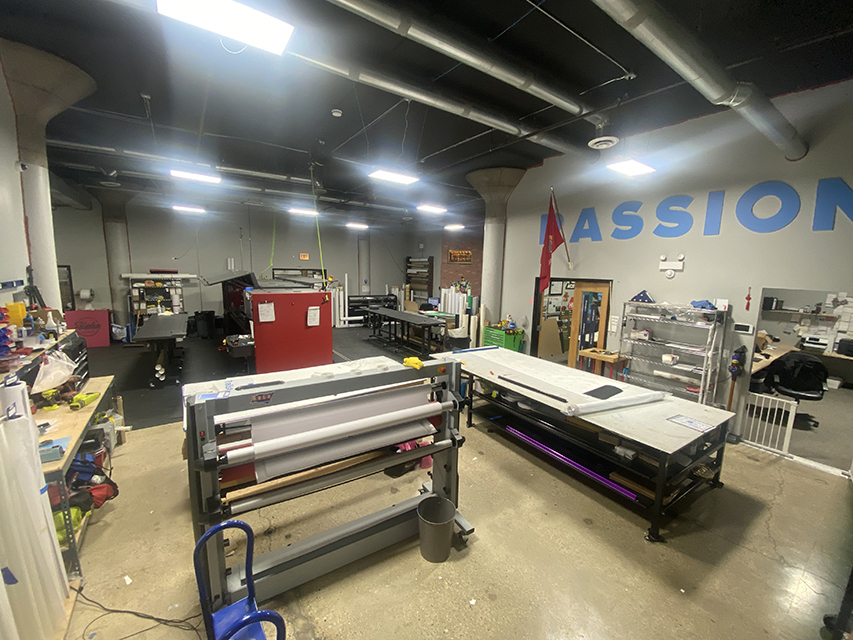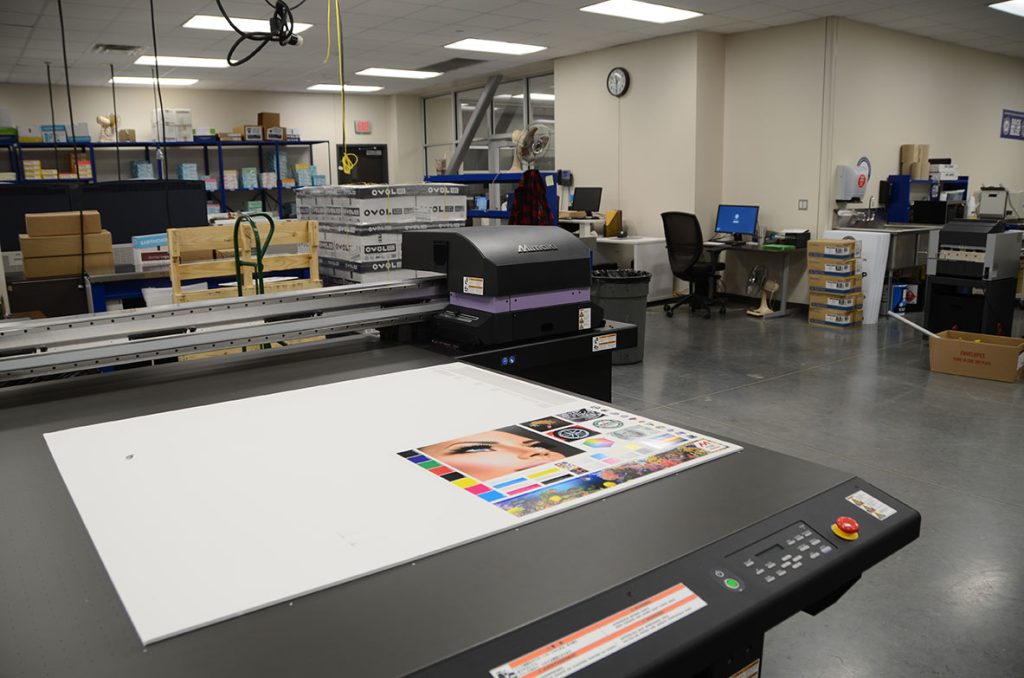The Ultimate Overview to Utilizing Printing Providers for Customized Art Prints
Guiding with the globe of customized art prints calls for a clear understanding of different printing solutions. Artists have to think about factors such as printing methods and materials to accomplish the desired end result. Each decision, from art work preparation to shade calibration, plays a vital role in the end product. As they check out these elements, artists can reveal the capacity for their job to link with audiences in a purposeful method. What actions can they take to guarantee their prints stand out?
Recognizing Different Sorts Of Printing Solutions
Although lots of people may ignore the complexities of printing services, recognizing the numerous types offered is necessary for anyone wanting to produce personalized art prints. The most common types consist of electronic printing, offset printing, and screen printing. Digital printing is preferred for its fast turn-around and ability to produce top quality images directly from digital documents, making it perfect for small runs. On the other hand, offset printing offers superior image quality and is cost-effective for larger amounts, making use of plates to move ink onto paper. Display printing, often utilized for textiles and advertising items, entails pressing ink with a mesh display, allowing for vivid shades and textures. Each technique has its distinct benefits and constraints, making it vital for musicians and developers to assess their certain demands, such as amount, wanted top quality, and spending plan, prior to selecting a printing service that lines up with their imaginative vision.
Choosing the Right Materials for Your Prints
Selecting the appropriate products is important for accomplishing high-grade personalized art prints. Comprehending the various sorts of paper and the value of ink quality can substantially affect the final outcome. Artists need to think about these variables to ensure their vision is accurately represented in the published item.
Paper Kind Explained
Selecting the right paper kind is vital for achieving the preferred aesthetic and durability in custom-made art prints. Various choices exist, each offering distinctive attributes. Shiny paper boosts color vibrancy and information, making it ideal for digital photography prints. Conversely, matte paper gives a softer surface, which is more suitable for artwork that requires subtlety and structure. Art paper, commonly made from cotton or alpha cellulose, uses archival high quality and is ideal for recreating detailed details in paints (Print Shop Near Me). Furthermore, specialty documents, such as watercolor or canvas, can include one-of-a-kind aesthetic effects. Ultimately, choosing the appropriate paper kind will significantly affect the last discussion, guaranteeing that the art work is both long-lasting and aesthetically appealing
Ink High Quality Matters
Ink high quality plays a crucial role in the overall success of customized art prints. High-grade inks assure vibrant colors, sharp details, and longevity, which are essential for showcasing artistic job. When choosing printing solutions, artists need to think about pigment-based inks over dye-based options, as they offer better fade resistance and shade security. Additionally, the choice of ink ought to match the selected paper type, enhancing the print's aesthetic influence. Environmental elements, such as humidity and temperature, can additionally influence ink efficiency; consequently, musicians need to inquire concerning ink solutions that stand up to these components. Inevitably, buying remarkable ink quality can boost the final product, ensuring that the art print stays real to the artist's vision for several years ahead.
Checking Out Printing Strategies: Digital vs. Conventional
While both traditional and digital printing techniques have their one-of-a-kind advantages, the choice on which technique to make use of typically rests on the particular requirements of the artwork. Digital printing masters convenience and speed, enabling for quick turnaround times and the ability to print on demand. This approach is specifically valuable for artists that need one-of-a-kind pieces or tiny runs, as it removes the requirement for comprehensive configuration processes.Conversely, conventional printing methods, such as lithography and display printing, typically generate richer structures and colors, appealing to artists seeking an extra tactile and genuine coating. These techniques can enhance the deepness and quality of the artwork, making them appropriate for bigger editions. Furthermore, typical methods may use a distinctive aesthetic that digital printing occasionally battles to duplicate. Eventually, the selection between these techniques ought to take into consideration factors like desired high quality, amount, and imaginative intent, guiding artists to the most suitable choice for their tasks.

Preparing Your Art Work for Printing
Efficiently preparing art work for printing needs cautious interest to information, no matter the chosen printing technique. Artists have to assure that their files are produced at the ideal resolution, typically 300 DPI, to maintain sharpness and clarity. The proper shade mode, normally CMYK for print, is essential to attain the preferred color accuracy. Artists should also consider the measurements of the art work, seeing to it to consist of hemorrhage locations if needed, to stop any type of unwanted white edges after trimming.Additionally, documents layouts play a vital duty; TIFF and PDF are usually favored for high-quality prints. Prior to submission, it is very important to review the artwork for any kind of imperfections or undesirable aspects. By carefully checking these facets, musicians can enhance the likelihood of their prints straightening with their innovative vision, ultimately leading to an effective printing result.
The Value of Shade Calibration and Proofing
Shade calibration and proofing are essential action in the printing procedure, as they assure that the last output properly reflects the musician's vision. Correct shade calibration warranties that the colors showed on the display suit those that will certainly be printed. This process involves adjusting the screen settings, printer profiles, and inks to accomplish a constant color representation.Additionally, proofing permits musicians to preview their job before the last print run. This phase enables them to detect and fix any kind of inconsistencies in saturation, color, or information, consequently minimizing expensive mistakes. By utilizing hard-copy or digital evidence, musicians can make educated choices about changes needed for perfect results.Incorporating shade calibration and proofing right into the printing process not only enhances the high quality of the last item yet also cultivates a trusted partnership in between the artist and the printing solution, guaranteeing contentment and integrity to the original artwork.
Choosing the Perfect Dimension and Layout for Your Prints

Advertising and Selling Your Customized Art Prints
Advertising and marketing and marketing custom art prints calls for a strong brand name identity to stand out in an open market. Effective on-line promotion approaches and the tactical use social networks systems can significantly boost exposure and involvement. By integrating these components, artists can develop a compelling existence that attracts prospective buyers.
Building Your Brand Name Identity
Establishing a strong brand identity is vital for musicians wanting to effectively market and market their custom art prints. This identity encompasses the artist's special design, worths, and tale, which reverberate with possible customers. Musicians should create a cohesive visual presence across all platforms, including logos, color pattern, and typography that reflect their artistic vision. Additionally, a clear objective statement assists interact the artist's purpose and passion. Engaging storytelling about the inspiration behind each item can cultivate psychological links with the target market. Uniformity in messaging, whether on social media sites or product packaging, boosts acknowledgment and depend on. By carefully curating their brand name identification, musicians can distinguish themselves in an open market, drawing in faithful clients who appreciate their artistry.
Effective Online Promo Strategies
What strategies can musicians use to effectively advertise their custom-made art publishes online? Initially, creating an expert web site showcasing the art work is crucial. This website must consist of in-depth summaries and high-quality photos to engage potential purchasers. Additionally, musicians can use e-mail advertising by building a client list to share updates, promos, and new launches. Working together with blog owners and influencers in the art neighborhood can expand reach and credibility. Using limited-time discounts or unique pieces can likewise develop necessity, encouraging purchases. Moreover, maximizing material for internet search engine with relevant key phrases will certainly improve exposure. Ultimately, maintaining a blog regarding the imaginative process look here can draw in art fanatics, fostering a deeper link with the target market and enhancing the general advertising and marketing technique.
Making Use Of Social Network Platforms
Social network platforms work as effective devices for musicians looking to market and offer their custom-made art prints. By leveraging systems like Instagram, Facebook, click site and Pinterest, musicians can display their job to a vast audience. Engaging visuals and critical hashtags can raise visibility, drawing potential buyers to their profiles. Consistently uploading web content, such as behind the curtain procedures or brand-new styles, aids keep target market rate of interest and fosters a sense of area. In addition, musicians can use targeted advertising to reach details demographics, boosting the possibilities of sales. Partnerships with influencers or other artists can further amplify direct exposure. Eventually, a well-curated social networks visibility not just advertises custom-made art prints but additionally constructs a faithful customer base with time.
Often Asked Questions

Just how Do I Discover Dependable Printing Expert?
To discover dependable printing solution suppliers, one should look into on the internet testimonials, seek recommendations from peers, contrast portfolios, request examples, and examine customer support responsiveness. This comprehensive strategy assurances educated decisions and satisfactory end results.
What Is the Normal Turn-around Time for Custom-made Prints?
The typical turn-around time for custom-made prints varies by copyright, yet normally ranges from a few days to 2 weeks. Elements affecting this include order dimension, complexity, and the certain printing techniques used.
Can I Obtain a Refund if I'm Not Satisfied With My Prints?
The concern of obtaining a reimbursement for unacceptable prints commonly relies on the specific printing service's policies. Numerous business use satisfaction guarantees, while others may have strict return conditions, highlighting the value of examining terms ahead of time.
Exist Any Kind Of Hidden Prices Related To Printing Providers?
Several printing solutions might consist of concealed prices such as arrangement charges, delivery fees, or added fees for certain products. It's vital for consumers to ask about all potential expenditures prior to settling their order.
Exactly How Can I Ensure My Prints Are Eco-friendly?
To assure prints are eco-friendly, one ought to select environment-friendly inks, recycled paper, and sustainable printing practices. Researching printing solutions that focus on sustainability and acquiring certifications can further ensure marginal environmental impact in the printing procedure. Guiding with the world of personalized art prints calls for a clear understanding of different printing services. Several individuals may overlook the details of printing services, understanding the numerous kinds offered is vital for anybody looking to create custom art prints. The most common types include digital printing, counter printing, and display printing. Efficiently preparing art work for printing needs cautious interest to detail, regardless of the chosen printing strategy. Prints intended at galleries may need conventional sizes to help with framing, whereas special layouts may appeal to enthusiasts looking for something distinctive.Lastly, the printing service's capacities should be reviewed.
Comments on “7 Surprising Benefits of Using a Print Shop Near Me for Custom Artwork”